
By Derek Keats, CC BY 2.0
Etymology: Bright-Colored
First Described By: Cabanis, 1850
Classification: Dinosauromorpha, Dinosauriformes, Dracohors, Dinosauria, Saurischia, Eusaurischia, Theropoda, Neotheropoda, Averostra, Tetanurae, Orionides, Avetheropoda, Coelurosauria, Tyrannoraptora, Maniraptoromorpha, Maniraptoriformes, Maniraptora, Pennaraptora, Paraves, Eumaniraptora, Averaptora, Avialae, Euavialae, Avebrevicauda, Pygostaylia, Ornithothoraces, Euornithes, Ornithuromorpha, Ornithurae, Neornithes, Neognathae, Neoaves, Inopinaves, Telluraves, Australaves, Eufalconimorphae, Psittacopasserae, Passeriformes, Eupasseres, Passeri, Euoscines, Passerides, Core Passerides, Passerida, Nectariniidae
Status: Extant, Least Concern
Time and Place: Within the last 10,000 years, in the Holocene of the Quaternary


The Orange-Breasted Sunbird is known from the Cape of South Africa
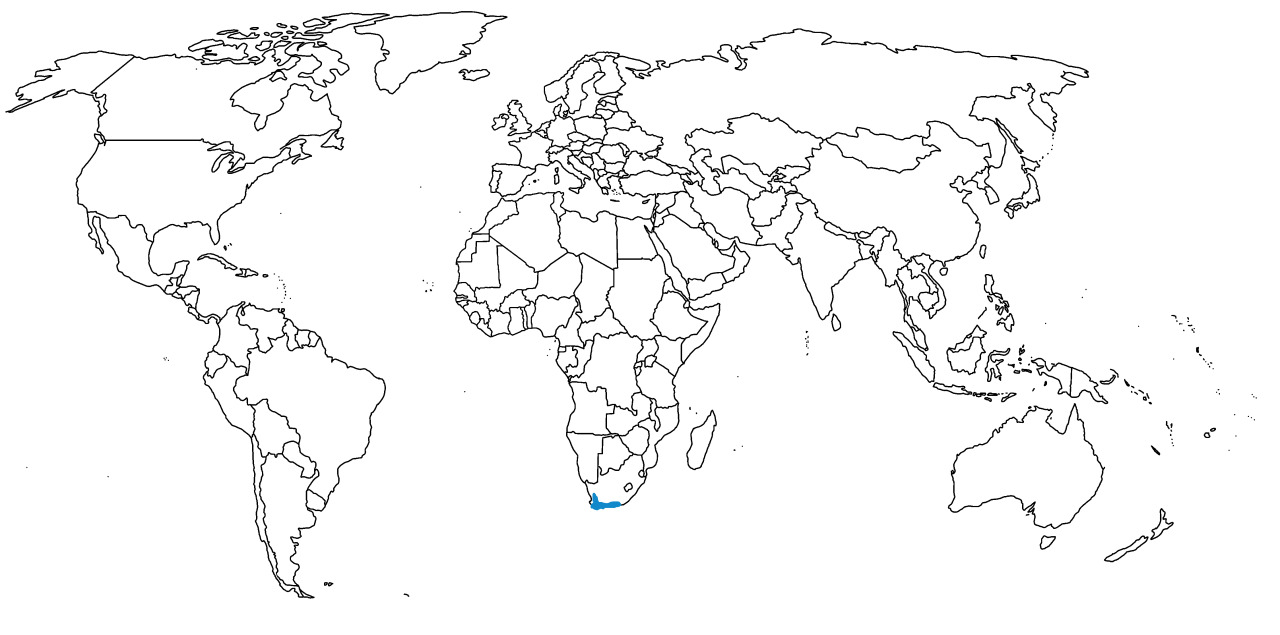
Physical Description: The Orange-Breasted Sunbird is an amazingly distinctive bird, very small at only 16.5 centimeters long for males and 13.5 centimeters long for females. The males are distinctive in general, with long dark tails and vibrant colors – their chests are orange and purple, with green heads; their bodies are yellow and, in general, they are iridescent and shiny. The females are yellow all over, and aren’t shiny at all. Both have long, curved beaks for feeding on nectar.
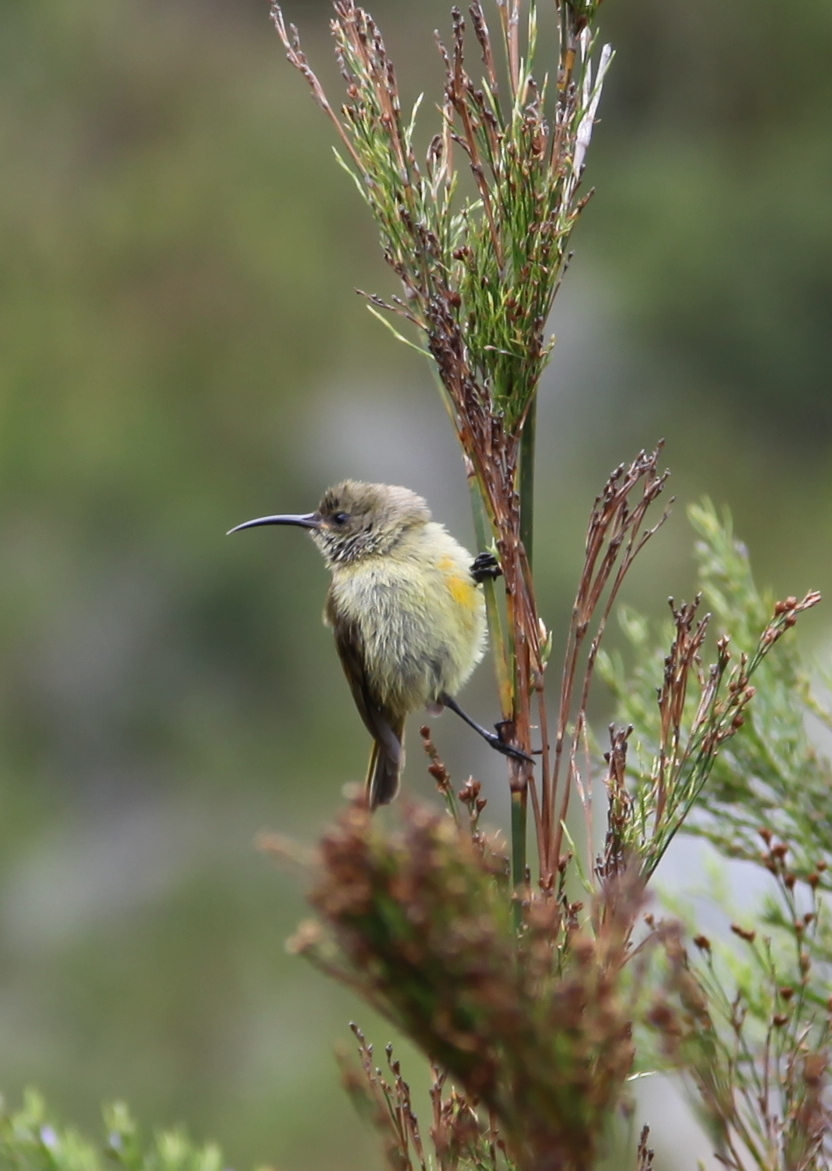
By Raymond Ellis, in the Public DOmain
Diet: The Orange-Breasted Sunbird primarily feeds on nectar, though it will occasionally supplement its diet with insects.
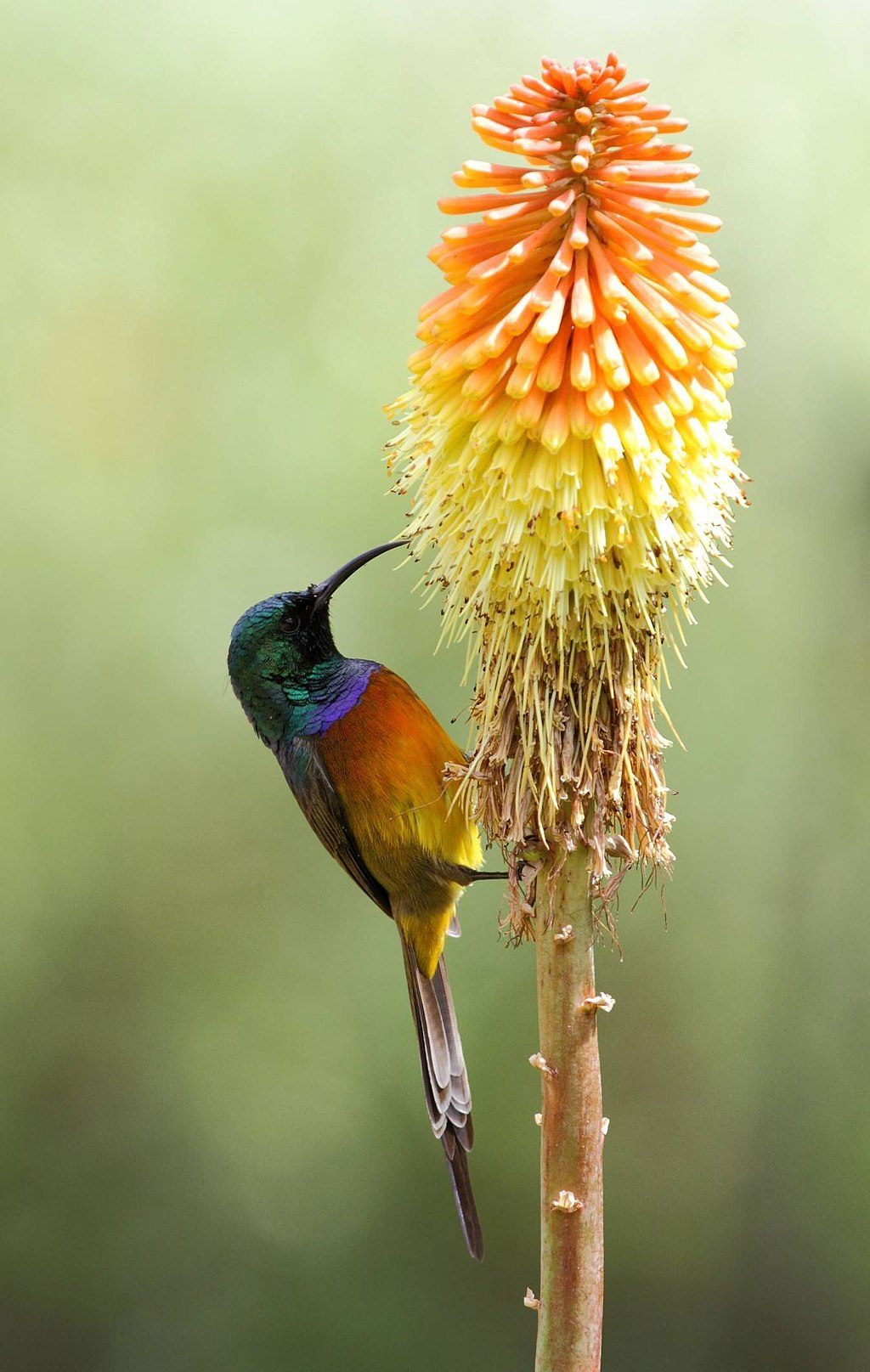
By Aland Manson, CC BY-SA 4.0
Behavior: These birds will forage alone or in small groups, mainly on the ground and in plants while reaching for food. They do occasionally form loose groups during the non-breeding season. They make high-pitched melodious notes, including “tzzurr tzzurr” or “Jeeeu jeeu” calls. They also make “seep-seep-seep-seep” calls back and forth, and males – when they chase each other – make calls that sound like “Ke-ke-ke-ke”.
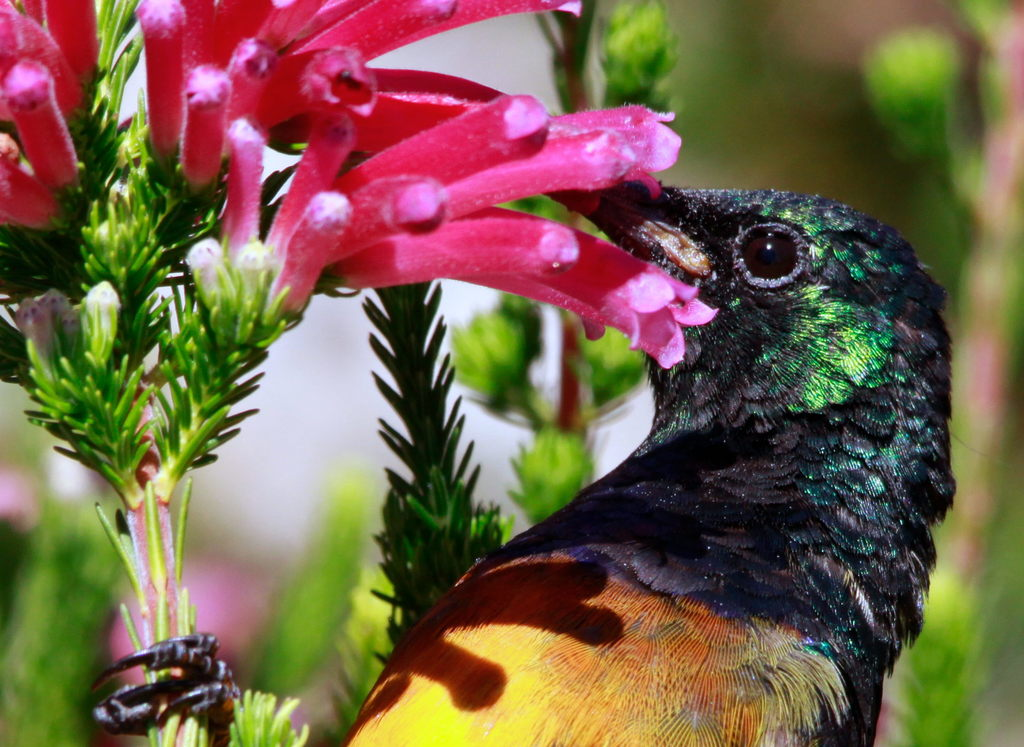
By Derek Keats, CC BY 2.0
The Orange-Breasted Sunbird mates all year round, though it peaks mating from May through August. Usually, they’ll lay two to three broods a year. The male makes territorial displays, including wing-stretching to reveal tufts of feathers. The female will then build the nest alone over the course of two weeks, making an ovular porch with a small entrance out of twigs and roots. They’re usually held together with cobwebs and down. Then, one to two eggs are laid and incubated by the female for two weeks. The chicks are brooded and fed by both parents for three weeks; they are then dependent on the parents for another three weeks after leaving the nest. They will migrate at least somewhat in search of flowering plants – aka, food.
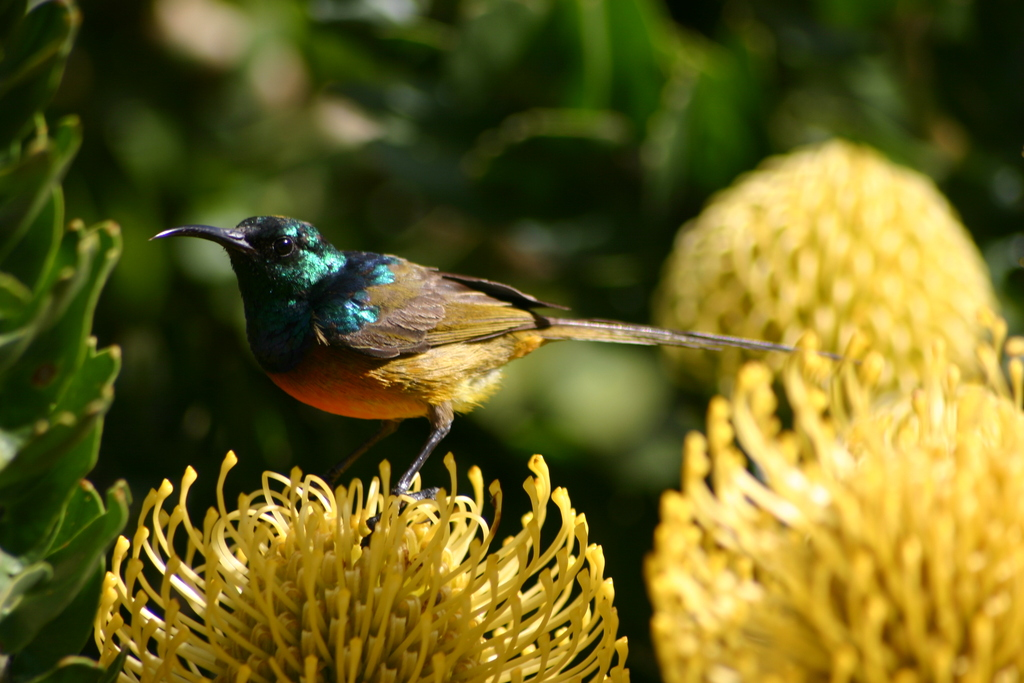
By Derek Keats, CC BY 2.0
Ecosystem: These sunbirds live in the Fynbos, a belt of shrublands along the Cape of Africa. They are occasionally found in gardens as well, and in the Karoo basin. Cuckoos do parasitize their nests.

By Prosthetic Head, CC BY-SA 4.0
Other: The Orange-Breasted Sunbird, while in a restricted range, is not considered threatened with extinction. That being said, habitat disturbance and loss has caused some population drops.
~ By Meig Dickson
Sources under the Cut:
Cheke, R. & Mann, C. (2019). Orange-breasted Sunbird (Anthobaphes violacea). In: del Hoyo, J., Elliott, A., Sargatal, J., Christie, D.A. & de Juana, E. (eds.). Handbook of the Birds of the World Alive. Lynx Edicions, Barcelona.
Jobling, J. A. 2010. The Helm Dictionary of Scientific Bird Names. Christopher Helm Publishing, A&C Black Publishers Ltd, London.
